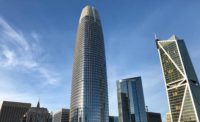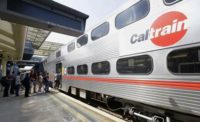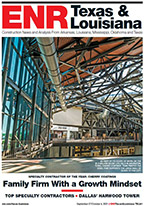Typically, BRBs act as vertical braces. In this case, they act only as fuses. "This will ensure we don't overstress the existing floor diaphragm and transfer excess load between the core and the existing frame," says Bill Janhunen, TM's project engineer.
The BRBs and rods, supplied by the steel fabricator, had to be installed concurrently with the reinforcing steel. That meant coordinating multiple trades.
"The rebar guy doesn't install threaded rods, the structural-steel guy doesn't do them, and the concrete guy doesn't do them," says Danska. "Everyone ended up having to work together. It wasn't straightforward."
The rigid spine is founded on a 7-ft-deep concrete mat supported by 30 micropiles. The basement-level bearing consists of upper and lower steel-plate housings, each 5 ft square in plan. The center of the bottom housing is a 4¾-ft-dia bowl. The center of the upper plate is the same bowl shape but inverted.
The housing contains a 3.5-ft-dia stainless-steel-covered steel slider. Both housings are anchored, either to the mat or to the core's solid reinforced-concrete sacrum, by shear lugs.
"The concrete structure is not as strong as the bearing," says Victor Zayas, president of the bearing supplier, Earthquake Protection Systems Inc. (EPS).
He says "680 Folsom is unique in that there is one bearing, used to meet the code rather than limit quake damage." Most of EPS' projects—including the 700 bearings that will go into Apple Inc.'s headquarters—are for buildings designed to survive the maximum considered quake with little or no damage, he says.
TMG's Field has no problem with the TM system's expected performance. 680 Folsom's probable maximum loss study, which measured potential quake damage to determine insurance premiums, showed slightly better results than TM's original scheme, he says. "We tried to build a building that performs better than the code [requires]," adds Field.













Post a comment to this article
Report Abusive Comment